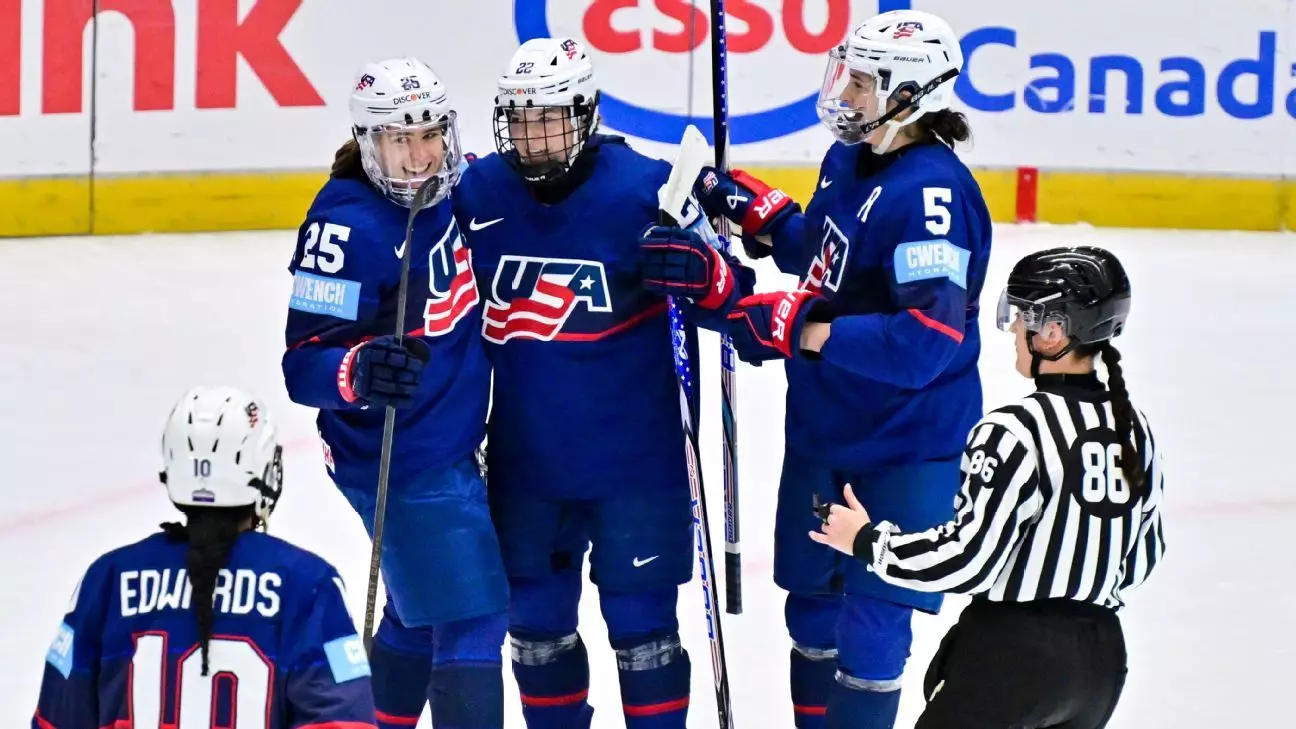Witnessing a game where momentum swings faster than a puck fired from a slap shot is a testament to the unpredictable nature of ice hockey. In Herning, Denmark, the thrilling match between the United States and Norway provided just such a spectacle. The U.S., leading 5-1 at one point, found themselves in a nail-biting overtime situation after Norway managed a remarkable comeback, forcing the game to go beyond regulation time. This encounter epitomized the essence of sports: relentless determination, nail-biting suspense, and electrifying performances by both teams.
Tage Thompson: A Rising Star’s Night to Remember
For American hockey star Tage Thompson, the night was nothing short of magical. The Buffalo Sabres center not only scored a hat trick but also secured an exhilarating overtime victory with a power-play goal, marking his emergence as a clutch player on the global stage. His performance was invigorating, showcasing not just scoring prowess but also the grit that defines elite hockey players. However, being critical, it’s essential to recognize that his previous inconsistency has raised questions. Night after night, top-level athletes must prove that they can rise to the occasion, especially when the stakes are high. Thompson’s performance is refreshing, but it also serves as a poignant reminder that consistency is key in solidifying one’s reputation in international play.
Norway’s Tenacity Shines Bright
Norway’s journey during this match demonstrated tenacity and heart, especially that of defenseman Stian Solberg, who not only played a critical role by scoring a hat trick but also rallied his team from behind. His effort reduced a seemingly insurmountable deficit, earning a much-deserved point for Norway. While Solberg’s performances have rightfully drawn acclaim, one must question whether this encouraging display of skill can translate into sustained success throughout the tournament. As the competition intensifies, maintaining such form will be crucial for Norway to not just seek points but to aim for victories.
The Coaching Perspective: Navigating Challenges
U.S. head coach Ryan Warsofsky shared a mix of relief and optimism following the game, emphasizing the importance of learning from this experience. His comment on building from the victory, especially against a formidable German squad on the horizon, underscores the potency of resilience in team sports. Clear tactical adjustments will be necessary; complacency can’t be the standard, particularly after squandering a significant lead. Warsofsky’s leadership will be tested in the coming days as his team faces pivotal challenges and seeks to refine their game strategy.
Player Dynamics and Team Chemistry
The U.S. team showed glimpses of superb synergy, bolstered by captain Clayton Keller’s outstanding contributions, with a goal and two assists. Also noteworthy was Cutter Gauthier’s performance, which places him among the top scorers in the tournament. However, self-critique is essential for any successful team. An analysis of U.S. defense strategies and on-ice communication is necessary to ensure they don’t fall prey to defensive lapses in future contests. While the offensive fireworks were a joy to behold, the defensive outing raised questions that need earnest addressing in future matches.
Broader Implications for the Tournament
This match carried broader implications, not only for the teams involved but for ice hockey as a sport as well. With both the U.S. and Norway showcasing resilience and skill, it’s clear that the international competition is intensifying. The unpredictability of the tournament adds a layer of excitement for fans, who find themselves invested in every twist and turn of the game. As the teams head into the latter stages of the championship, the need for adaptability, tactical refinement, and raw skill will dictate who advances further. The narrative of this tournament is still unwritten, but the lessons from Herning set the stage for riveting encounters ahead.

